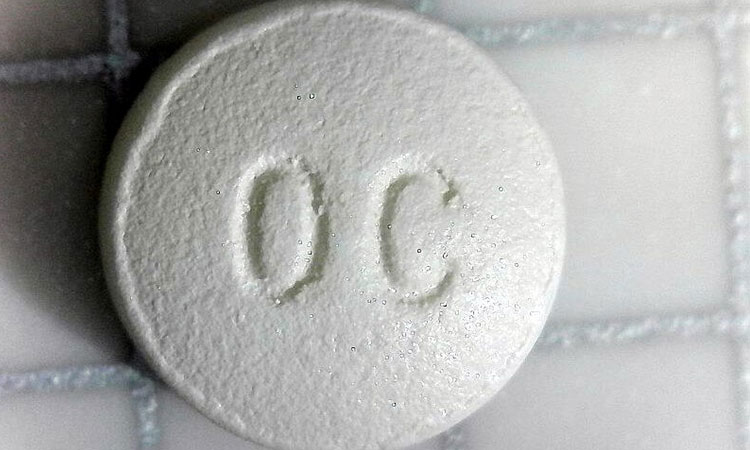
Snorting Oxycodone – Oxycodone is a synthetic prescription opioid that is approved to treat moderate to severe pain and also acts as a nervous system depressant. Oxycodone is best known by the trade name OxyContin, and like all opioids, oxycodone has a high potential for abuse and addiction.
Oxycodone is addictive because it works on the brain’s reward center via specific neurotransmitters—chemicals such as dopamine and serotonin that contribute to powerful feelings of well-being. Oxycodone is prescribed in the form of a tablet, and oral delivery is the most common means of abuse. It can be crushed into a powder, however, and the resulting product can be inhaled into the nasal passage—an action that results in faster transit to the brain.
Snorting Oxycodone Effects
When oxycodone is snorted, rapid absorption of the drug produces a substantial release of dopamine, which then initiates a euphoric “high” and activates the drug’s potential for addiction. Over time, dependency and tolerance can develop from regular oxycodone use. When a user becomes dependent on oxycodone, highly unpleasant withdrawal effects will manifest if he or she attempts to cut back or quit abruptly.
The onset of withdrawal symptoms is an interpretive sign that the user’s body has become incapable of functioning normally without drug use. These symptoms are both mental and physical and can continue for several days after the last dose has been administered.
Along with dependency, tolerance is likely to occur. As the user’s system becomes less sensitive to oxycodone use, he or she is forced to consume more and more of the drug to reach the desired “high.” This pattern of “increased exposure = reduced response” can quickly lead to a worsening of the addiction, and ultimately, an overdose.
Tolerance and dependency, however, are not the only dangerous health problems that can result from snorting oxycodone – this method of delivery can produce infections and cause significant damage to the nasal septum and neighboring tissues.
Other possible side effects and dangers of snorting oxycodone include:
- Severe headache
- Dry mouth
- Abdominal pain
- Constipation
- Nausea and vomiting
- Stuffy nose
- Shaking and tremors
- Loss of motor coordination
- Slurred speech
- Irritability
- Mood swings
- Chest tightness
- Respiratory infections
- Seizures
- Confusion
- Paranoia
- Respiratory depression
- Death
Snorting Oxycodone and Overdose
Snorting oxycodone, especially in combination with other drugs or alcohol can result in life-threatening central nervous depression, overdose, and death Symptoms of an oxycodone overdose include:
- Vomiting
- Pinpoint pupils
- Low blood pressure
- Pale skin
- Bluish lips and nails
- Limp body
- Cold, clammy skin
- Unresponsiveness
- Unconsciousness
- Slow or stopped breathing
- Seizures
- Extremely slow heart rate
If you or someone you know is exhibiting signs of an oxycodone overdose, please call 911 immediately.
Getting Help – From Detox to Addiction Treatment and Beyond
Oxycodone use, regardless of the method of delivery, is a very dangerous and potentially deadly habit. Many people who are addicted to prescription painkillers such as oxycodone deny the severity of their problem, however, and are reluctant to seek help. And yet, seeking treatment and support is critical to recovery from any psychoactive substance, as well as all phases of severity and dependence.
Detox
Formal treatment for oxycodone addiction usually begins with our detox program, a clinical process that supervises the patient’s progress throughout drug withdrawals.
During detox, the patient is continually monitored, and medication-assisted treatment (MAT) is administered as appropriate. MAT includes the use of drugs approved for the treatment of opioid addiction such as methadone and buprenorphine.
After detox, patients are strongly encouraged to seek admission to our reputable, evidence-based treatment program. Our program options include both inpatient (residential) and intensive outpatient therapy formats.
Treatment for Oxycodone Addiction
Persons receiving inpatient treatment stay in our addiction treatment center around-the-clock, usually for a month or more. IOP patients participate in our treatment program several times per week, but have the flexibility of living independently, either at a personal residence or a sober living facility.
Both programs can be equally effective and include behavioral therapy, individual and group therapy, counseling, 12-step programs, and holistic practice options such as art/music therapy, meditation, and yoga.
Oxycodone dependency is a serious and potentially life-threatening condition that requires immediate, long-term treatment. Although oxycodone addiction cannot be cured, it can be treated, and those in recovery can regain their lives and enjoy long-term sobriety and wellness.
Our center offers a safe, structured environment and professional staff who are trained to identify and address the unique needs of each patient using an in-depth, custom approach to addiction treatment.
Getting More Information
We provide a comprehensive, holistic method to treatment, encompassing a wide array of different evidence-based practices in combination. All of Midwood Addiction Treatment’s primary therapists are either licensed or master’s level clinicians; our programs are structured with various components of evidence-based treatment practices and holistic approaches to treatment that provide our patients with the knowledge and tools they need to be successful in their recovery.
If you or your loved one is suffering from substance abuse, please seek help as soon as possible.